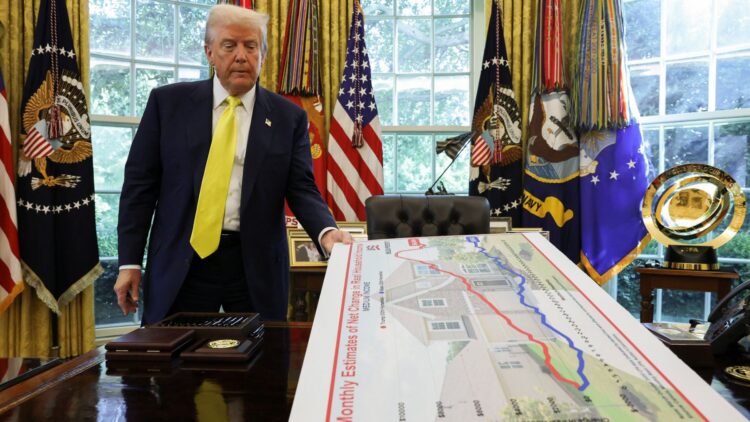For several months now, US President Donald Trump has been implementing a tariff policy on his international trade partners, which has significantly impacted the global economy. In this article, we explore the impact of the Trump administration’s recent escalation of import tariffs, with a particular focus on the semiconductor and pharmaceutical sectors, and the implications of these measures for both federal revenue and the international trade negotiation landscape.
Explosion in tariff revenue: from US$30 billion to US$50 billion per month
U.S. Commerce Secretary Howard Lutnick said on Thursday he expects the country to collect $50 billion a month in tariff revenues or more – up from $30 billion last month – as higher levies on imports from dozens of countries kick in.
“And then you’re going to get the semiconductors, you’re going to get pharmaceuticals, you’re going to get all sorts of additional tariff money coming in,” Lutnick said in an interview with Fox Business Network.
U.S. President Donald Trump’s higher tariffs on imports from dozens of countries took effect on Thursday, raising the average U.S. import duty to its highest in a century, with countries facing tariffs of 10% to 50%. Trump on Wednesday also announced plans to levy a tariff of about 100% on imported semiconductor chips unless manufacturers commit to produce in America, as well as a small tariff on pharmaceutical imports that would rise to 250% over time.
In addition to the significant increase in revenue, the semiconductor and pharmaceutical sectors are also expected to add considerable taxes to their revenues. This strategy combines tariff pressures with selective incentives for local production, reinforcing the goal of strengthening American production.
Strategic exceptions to boost national production
Details of those sectoral tariffs are expected in coming weeks after the Commerce Department completes investigations into the impact of those imports on U.S. national security. Lutnick told Fox Business Network that companies could win exemptions from the expected semiconductor tariff if they filed plans to build plants in the United States, and those plans were overseen by an auditor.
“His objective is to get semiconductor manufacturing done here,” he said, predicting that the initiative would result in some $1 trillion in investment to bolster domestic manufacturing.
Agreements and exemptions that redefine the commercial game
Other exemptions have already been agreed, including with the European Union, which said its agreement to accept a 15% tariff on most EU exports includes chips, and with Japan, which has said the United States agreed not to give it a worse rate than other countries.
The initiative to grant tariff exemptions through commitments to domestic investments in some sectors stimulates domestic production and also ensures diplomacy, benefiting cooperating countries, such as the European Union and Japan, by offering them relatively moderate tariffs.
Congress created a $52.7 billion semiconductor manufacturing and research subsidy program in 2022 under former President Joe Biden, and all five leading-edge semiconductor firms agreed last year to locate chip factories in the U.S.
Negotiations in sight: extension of the agreement with China
Lutnick, asked about separate talks underway with China on extending a tariff truce that is due to end on August 12, said he felt an agreement was possible.
“I think we’re going to leave that to the trade team and to the president to make those decisions, but it feels likely that they’re going to come to an agreement and extend that for another 90 days, but I’ll leave it to that team.”
The new tariffs represent an ambitious policy whose main objectives are to increase federal revenue, encourage domestic industrial investment, and push for more advantageous trade agreements. However, the balance between revenue, inflation, and the stability of global supply chains will depend on the effectiveness of ongoing negotiations.
GCN.com/Reuters


